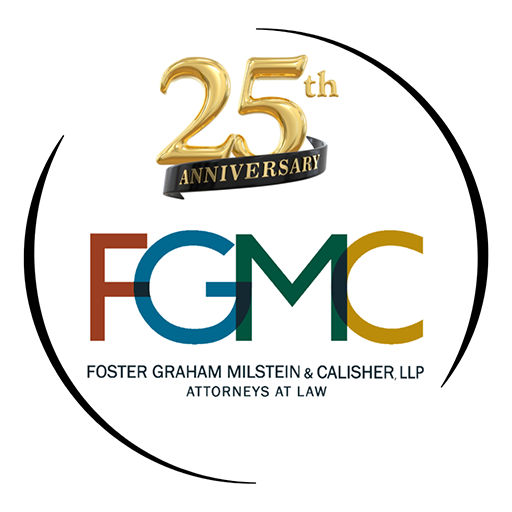Of Counsel
In December we examined many aspects of the Tax Cuts and Jobs Act (the “Act”), and in particular those portions of the Act that we expected many of our clients, colleagues and friends to be most interested in. One aspect of the legislation that garnered a lot of attention then and now concerns a new business deduction available to individuals with “qualified business income” from partnerships, limited liability companies, S corporations, and sole proprietorships. In our December summary of the Act, prepared just before the President actually signed the new legislation, we provided only an overview of this new and particularly complicated deduction. We promised a more thorough analysis of this deduction after having additional time to examine its particulars and are happy to provide this analysis now.
First – a warning. Qualification for this deduction, in whole or part, is extremely complicated.
In General
The new deduction (IRC § 199A) provides that a noncorporate taxpayer is generally allowed a deduction equal to 20% of qualified business income from a partnership, limited liability company, S corporation, or sole proprietorship. “Qualified business income” is defined as the net amount of items of income, gain, deduction, and loss. Certain investment related items are excluded from this definition including capital gains and losses, dividends and interest income that is not allocable to the business. Compensation received by employees and guaranteed payments received by partners are also excluded from the calculation of qualified business income.
Specified service trade or businesses such as law, accounting or medical practices are generally not entitled to the Section 199A deduction; however, the deduction is available if the taxable income of an owner of one of these types of businesses is less than $207,500 ($415,000 in the case of a joint return).
When taxable income exceeds $157,500 ($315,000 for married taxpayers filing jointly) the taxpayer’s deduction is limited based on the amount of W-2 wages paid by the business and the business’s unadjusted basis in acquired qualified property.
The deduction is available to taxpayers who do not itemize their expenses, and it is a below the line deduction, meaning it is a deduction that reduces adjusted gross income in arriving at taxable income. It is available for tax years beginning after December 31, 2017, and as with much of the Act pertaining to noncorporate taxpayers, before January 1, 2026.
Calculating the Deduction
The amount of the deduction is (1) the lesser of (a) the taxpayer’s combined “qualified business income” (defined below), or (b) 20% of the excess of taxable income (determined without regard to the deduction) over the sum of the taxpayer’s net capital gain and qualified cooperative dividends, plus (2) the lesser of (a) 20% of the qualified cooperative dividends, or (b) the taxpayer’s taxable income (minus net capital gain). The total deduction is limited to the taxpayer’s taxable income for the year.
Qualified Business Income
“Qualified business income” is the net amount of qualified items of income, gain, deduction and loss relating to any qualified trade or business (defined below) of the taxpayer. It does not include REIT dividends, qualified cooperative dividends, or income from qualified publicly traded partnerships. “Qualified items of income, gain, deduction and loss” are those such items that are effectively connected with the conduct of a trade or business in the U.S.
If the net amount of qualified items of income, gain, deduction and loss relating to a qualified trade or business is less than zero, the amount is carried over as a loss from the trade or business in the following tax year.
As stated above, there are exceptions to what constitutes qualified items of income, gain, deduction and loss. These include, but are not limited to investment income items that are, (i) short-term capital gain and loss; (ii) long-term capital gain and loss; (iii) any dividend; (iv) interest income except interest income properly allocable to the trade or business, and (v) commodity transaction or foreign currency gain or loss.
Qualified business income also doesn’t include reasonable compensation paid to the taxpayer by any qualified trade or business for services rendered for the trade or business, guaranteed payments made to a partner (IRC § 707(c) payments), and IRC § 707(a) payments to a partner outside his capacity as partner for services rendered for the trade or business.
Qualified Trade or Business
A “qualified trade or business” is a trade or business other than a specified service trade or business, or the performance of services as an employee. The term “specified service trade or business” refers to a trade or business involving the performance of services described in IRC § 1202(e)(3)(A) (e.g., health, law, accounting, athletics, or a business where the principal asset of the business is the skill or reputation of one or more employees or owners, but not engineering and architecture), or any trade or business which involves the performance of services that consist of investing and investment management, trading or dealing in securities, partnership interests, or commodities.
However, a special exception allows for a deduction with respect to specified service trades or businesses based upon the taxpayer’s income. If the taxable income of a taxpayer is less than the sum of $157,500 ($315,000 in the case of a joint return), plus $50,000 ($100,000 in the case of a joint return) (all amounts are indexed for inflation), a deduction is allowed. A phaseout rule reduces the 20% deduction available to such specified service trade or business by 1% for each $2,500 ($5,000 in the case of a joint return) of taxable income in excess of $157,500 ($315,000 in the case of a joint return). As a result, in 2018 no deduction is allowed for a specified service trade or business under IRC § 199A if the taxpayer’s taxable income equals or exceeds $207,500 ($415,000 in the case of a joint return). This exception allowing a deduction for specified service trades or businesses based upon a taxpayer’s income is one of the more complicated aspects of IRC § 199A.
Combined Qualified Business Income
A factor in calculating the Section 199A deduction is “combined qualified business income.” This refers to the sum of the deductible amounts determined for each qualified trade or business carried on by the taxpayer, plus 20% of taxpayer’s qualified REIT dividends and qualified publicly traded partnership income. A qualified REIT dividend is a dividend received from a real estate investment trust that is not a capital gain dividend or qualified dividend income. Qualified publicly traded partnership income is generally defined as certain items of income derived from a publicly traded partnership (that is not treated as a corporation) and gain from the sale of an interests in a publicly traded partnership.
Deduction Limitations
The Section 199A deduction is limited. This limitation provides another complication in the application and computation of the deduction. The limitation on the deduction is the lesser of (1) 20% of the taxpayer’s qualified business income from a qualified trade or business, or (2) the greater of (i) 50% of the W-2 wages relating to the qualified trade or business, or (ii) the sum of 25% of the W-2 wages relating to the qualified trade or business and 2.5% of the unadjusted basis immediately after acquisition of all qualified property.
“W-2 wages” refers not just to wages paid, but also elective deferrals (to retirement plans) as well, so long as these amounts are all allocable to the qualified business income. “Qualified property” is tangible property subject to depreciation that his (A) held by and available for use in the qualified trade or business, (B) used during the year in the production of qualified business income, and (C) the depreciable period for which has not ended before the close of the tax year. The depreciable period for these purposes begins when the property is placed in service and ends the latter of 10 years after the property is placed in service, or the asset’s applicable depreciable (MACRS) life.
So the deduction is more readily available to pass-through businesses (partnerships, limited liability companies, S corporations, and sole proprietorships) that either employ a lot of people or simply pay a lot in wages, and/or have significant capital expenditures. However, a further complication to Section 199A provides that the wage and property limitations actually don’t apply at all for taxpayers below a threshold amount of $157,500 ($315,000 in the case of a joint return) of taxable income.
If the taxable income of a taxpayer exceeds the threshold amount by less than $50,000 ($100,000 in the case of a joint return), and the wage and property limitation is less than 20% of the taxpayer’s qualified business income from the qualified trade or business (determined without regard to the rule addressed by this paragraph), then the wage and property limitation will not apply at all. Instead the 199A deduction is reduced by (1) 20% of the qualified business income from the qualified trade or business (determined without regard to this rule), minus (2) the wage and property limitation (also determined without regard to this rule), multiplied by (I) the amount by which the taxpayer’s taxable income exceeds the threshold amount, divided by $50,000 ($100,000 in the case of a joint return). All of this means that the deduction for a taxpayer whose income exceeds the threshold amount by less than $50,000 ($100,000 in the case of a joint return), and 20% of the qualified business income from the qualified trade or business exceeds the wage or property limitation, will take an actual deduction amount somewhere between 20% of the qualified business income from the qualified trade or business and the wage or property limitation.
Claiming the Deduction by Partners and S Corporation Shareholders
Each partner in a partnership, member of a limited liability company, or shareholder in an S corporation, separately computes and claims his or her own 199A deduction. Therefore, each person takes into account his or her allocable share of the business’s qualified items of income, gain, deduction, and loss, as well as an allocable share of W-2 wages and unadjusted bases of qualified property. Wages are allocated on the same basis that wage expense is allocated among the business owners, and the basis of qualified property is allocated on the same basis that depreciation expenses is allocated.
Because the 199A limitations are also computed by each partner, member or shareholder, it’s possible for some persons to claim the deduction while others may not. This might encourage some partnership or limited liability companies to amend their partnership or operating agreements in an attempt to specially allocate W-2 wages and depreciation expense in a fashion designed to allow partners or members to maximize their Section 199A deductions.
Miscellaneous
Generally, taxpayers are subject to a 20% accuracy related penalty for an underpayment of tax that is attributable to a substantial understatement of income. An understatement is “substantial” if it exceeds the lesser of 10% of the tax required to be shown on a return or $5,000. However, for taxpayers claiming the 199A deduction the first threshold for determining if an understatement is substantial is reduced from 10% to 5%.
In passing IRC § 199A, Congress has directed the Internal Revenue Service (IRS) to issue regulations that the IRS determines is necessary to carry out the purposes of the deduction.

